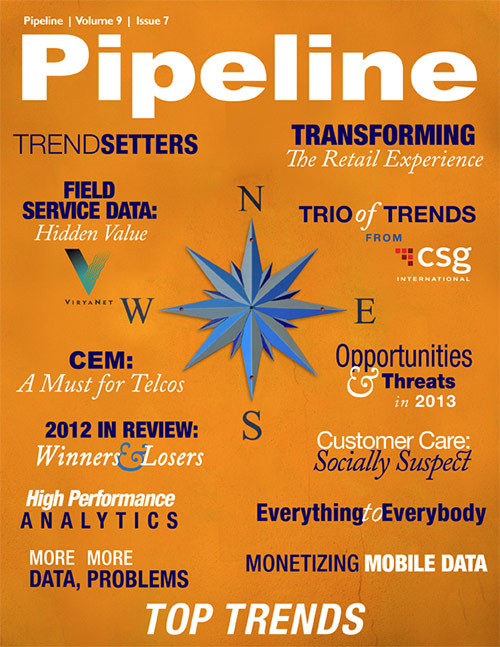High-Performance Data Analytics to the Rescue
By: Ken King

For communications service providers (CSPs), success has always entailed straddling two paths to competitive advantage. One path requires understanding the limitations of your technology and finding creative ways to mitigate them. The other path requires recognizing when technology has advanced to such a point that previous constraints no longer apply. When this happens, competitive advantage comes to those who act quickly and decisively to shed the old ways of doing business.
Most CSPs are at this technological crossroads today. Until now, CSPs were forced to strictly conserve computing resources and ensure that processes could run within a limited window of time. Therefore your processes used analytics sparingly on just a sample set of available data, and your analytical infrastructure was not designed to meet needs from big data and complex analytical processing.
Recent dramatic improvements in computing power’s price and performance have rendered such processes totally obsolete. But how do you transition to the new way of doing business so you can be one of the winners in today’s competitive landscape?
Enter high-performance analytics.
High-performance analytics capture the value in all your data
Communications companies collect and store huge amounts of data, much of it mandated by regulators. Most CSPs regard this as a burden, but a necessary cost of doing business.
In reality there’s never been a better time to acknowledge that customer information — from data to network performance, call centers and social-media sources like Twitter, Facebook and more — is actually your best source of competitive advantage. With high-performance analytics you can finally start putting all that data to good use.
The strength of analytics centers on its ability to accurately forecast the future. High-performance analytics enables you to do even more: it helps you minimize risk, operate more efficiently and make faster, better decisions based on a lot more information. It can also help CSPs:
- achieve sustainable competitive advantage by accurately matching price plans to individual customer preferences;
- significantly improve collections efforts to reduce accounts receivable and days sales outstanding (DSO);
- recognize their most influential customers and subsequently convert those customers’ social influence into better marketing of company services;
- boost revenue through a better understanding of online and television audience behaviors;
- realize the potential for profitable location-based mobile services that enhance the customer experience.
Getting the price right for every customer
“I am the head of data analytics, and I do not understand all our price plans.”
That quote comes from the person responsible for customer analytics at a large Latin American operator. If he finds the price plans confusing, imagine how frustrating it can be for a new contact-center agent or retail-store clerk, let alone a customer. Price dissatisfaction is the most common reason for customer defections.
Network operators are remarkably creative in launching price plans. A mixture of speed caps, data caps and usage caps is the preferred method to attract customers to broadband services and prevent a handful of gluttonous users from consuming so much bandwidth that service disruptions occur.
Operators seek to offer each customer the best price plan so they can maximize their company’s profitability over time. Of course, the “best” plan varies by customer, and the best plan for an individual customer shifts over time as circumstances and usage patterns change.
Operators rely on contact-center agents, store clerks or self-service rate-plan calculators to make simplistic calculations based on a few parameters. But this hit-or-miss strategy is both imprecise and inefficient.



















